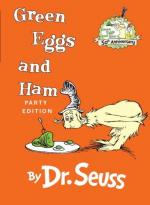|
This section contains 840 words (approx. 3 pages at 300 words per page) |

|
The egg, or ovum, is the gamete (reproductive sex cell) produced by most female animals. It is fertilized by the sperm, which is the male gamete. The term "egg" is commonly used to include the acellular structures that surround the ovum.
In "higher" animals, including arthropods (such as crabs and insects), most fish, most amphibians, many reptiles (including birds), and some mammals (the echidna and the platypus), the egg is a relatively large structure in which the young matures outside the mother's body. This form of reproduction is called oviparous, or egg-laying. In the viviparous, or live-bearing, form of reproduction used by some fish, amphibians, and reptiles, as well as most mammals, the developing egg remains within the mother's body.
The eggs of both amphibians and amniotes (reptiles and mammals) generally contain a protective covering and the cells from which the young develop. The protective covering may take...|
This section contains 840 words (approx. 3 pages at 300 words per page) |

|


